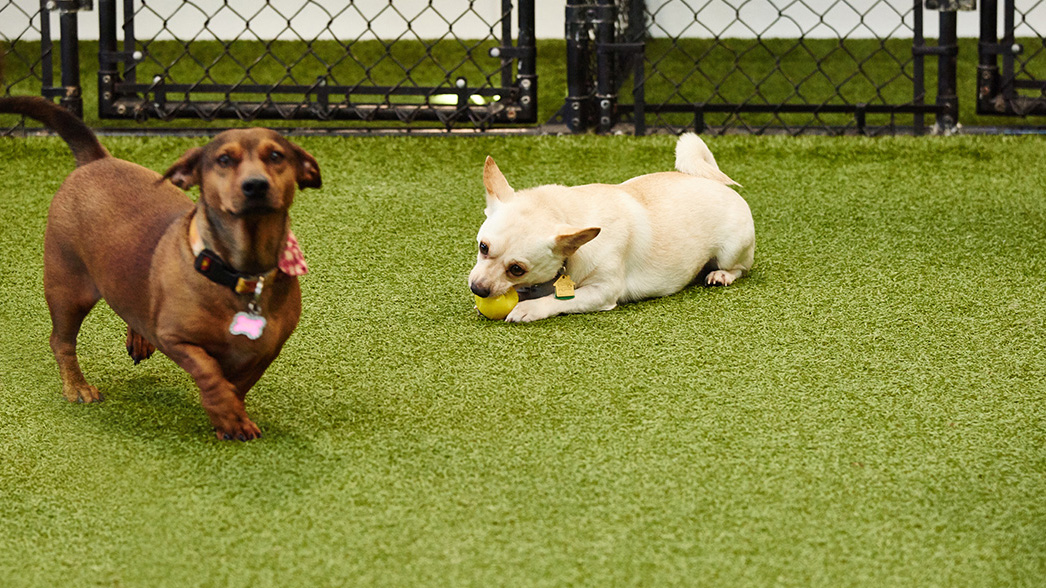
BLOG
THE SUMMER HEAT IS COMING
Merritt Milam | April 30, 2018
Soon we’ll be leaving the cool mornings and breezy, warm springtime for the oppressively hot, humid days of an Alabama summer. Whether your pet is an inside dog or spends lots of time outside, it’s important to know the signs of heat stroke and how to protect them from this dangerous condition.
A dog’s fur is very helpful in protecting them when the weather is cold but can be problematic in the heat of summer. Unlike humans, dogs eliminate heat by panting. They also have sweat glands in their footpads to dissipate heat, but these only provide minimal relief.
Signs of Heat Exhaustion
Watch for excessive panting, drooling, dehydration, rapid heart rate, and signs of discomfort. Make sure you keep an eye on the ambient temperature. Most causes of heatstroke in dogs is linked to carelessness, like leaving them in a car on a hot day or not providing appropriate shade and water if left outside.
Providing Immediate Care
First, remove your dog from the hot environment immediately. If they are unconscious, do not let water enter the nose or mouth and DO NOT give them aspirin to reduce the fever. This can lead to other serious problems. According to PetMD, here is a list of immediate care steps to take.
- Put your dog in the bathtub.
- Run a cool (not cold) shower over your pet, covering the whole body — especially the back of the head and neck.
- Allow the water to fill up the bathtub as you shower the dog. Keep the head elevated to prevent aspiration pneumonia.
- If getting the dog into the tub is impractical, use a garden hose to cool the dog or place him in a pool of cool water.
- Apply a cold pack to the dog’s head to help lower his body temperature — a packet of frozen vegetables works fine.
- Massage the legs. A vigorous rubbing helps the dog’s circulation and reduces the risks of shock.
- Let the dog drink as much cool or cold water as it wants. Adding a pinch of salt to the water bowl will help the dog replace the minerals it lost through panting.
The following steps should be taken, regardless of whether the dog is conscious, appears to recover well, or was only mildly affected:
- Check for signs of shock.
- Take the dog’s temperature every five minutes, continuing water-cooling until it drops below 103°F (39.4°C).
- If the dog’s temperature drops a little more – to around 100°F (37.8°C) – don’t worry. A slightly low temperature is a lot less dangerous.
- Treat for shock if necessary.
- Get immediate veterinary attention. Heatstroke can cause unseen problems, such as swelling of the brain, kidney failure, and abnormal clotting of blood. On the way to the veterinarian, travel with the windows open and the air conditioner on.
Prevention
The good news…heatstroke can be prevented! Make sure you monitor your dog’s exposure to hot, humid conditions. Provide plenty of cool water and a shady place to escape if they are outdoors. NEVER leave them in the car! Even if you lower the windows, a warm day can raise the temperature inside the car to extremely dangerous levels. If your pet is a long-haired breed, consider a summer shave-down grooming. This will help them handle the hot temperature better. Call us at 205.902. WAGS (9247) to schedule your pet’s summer grooming.
Remember, dogs wear a fur jacket that they can’t remove. With a little help, you can prevent the summer’s heat and humidity from causing serious injury or death to your furry family member.
Contributing content provided by PetMD. https://www.petmd.com/dog/emergency/common-emergencies/e_dg_heat_stroke


